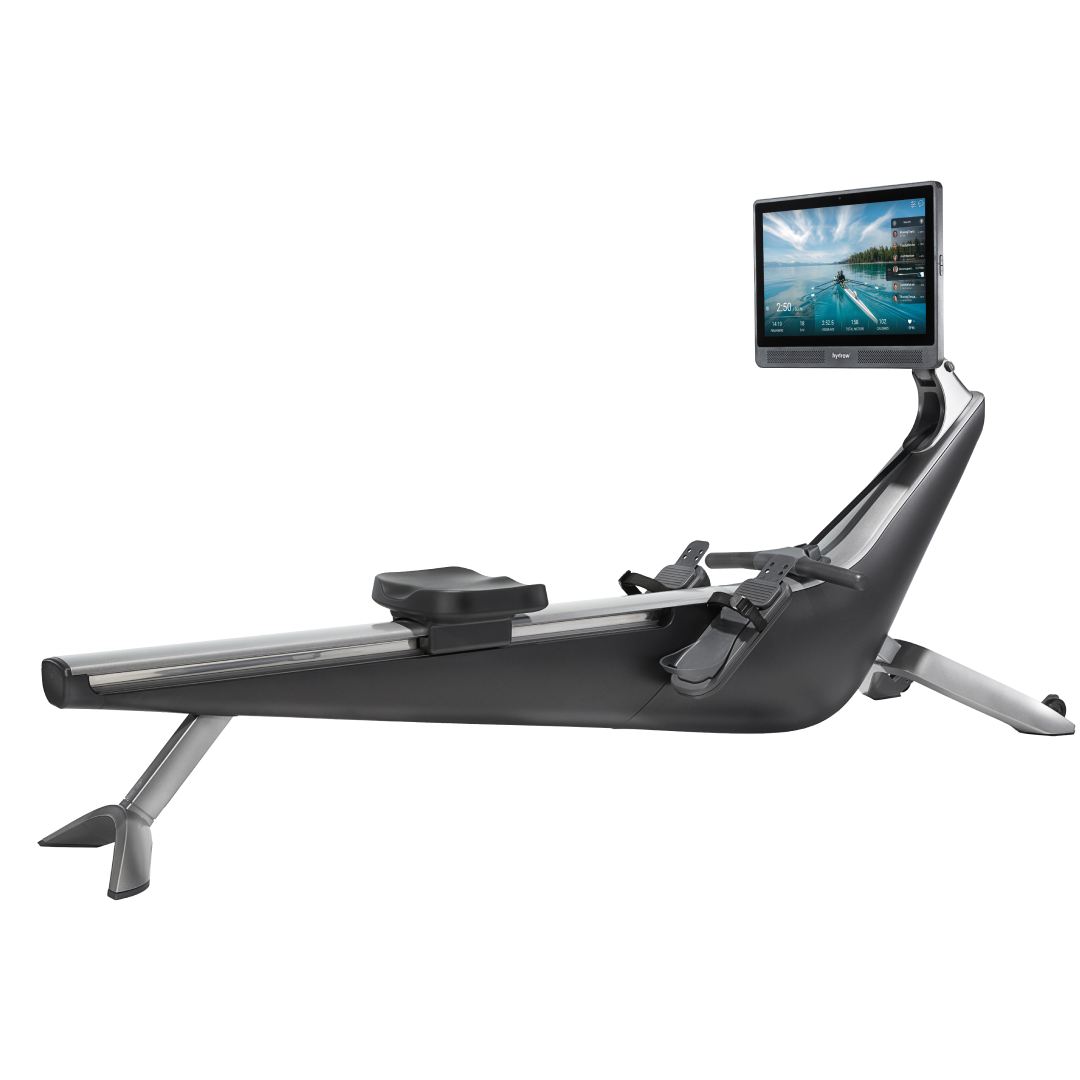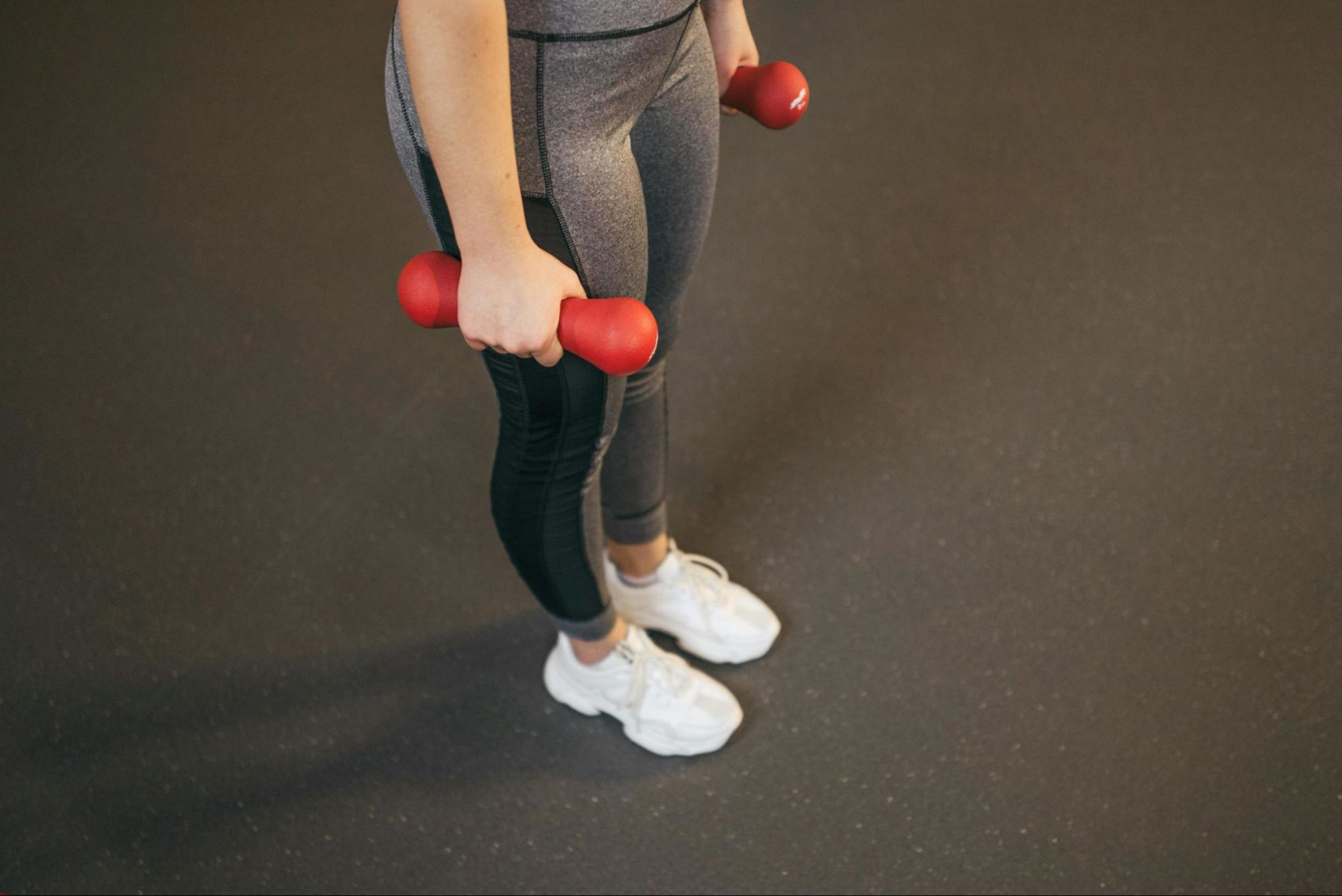Can Strength Training Lower Blood Pressure? Here’s What the Science Says

The benefits of exercise for lowering blood pressure and improving cardiovascular health are well documented. Indeed, regular physical activity is a tentpole of a heart-healthy lifestyle.
Most people who are looking to lower their blood pressure with exercise usually turn to aerobic exercise first, but can strength training lower blood pressure, too? The answer is a resounding yes!
Here, we’re breaking down everything you need to know about strength training and blood pressure, including:
Let’s get started!
Understanding high blood pressure
Before we get into what it means for your blood pressure to be high, let’s talk about blood pressure itself. According to the National Heart, Lung, and Blood Institute, blood pressure is the force that your blood exerts on the walls of your arteries.
Blood pressure measured in two numbers: The first, your systolic blood pressure, is the force of your blood when your heart is pumping. The second number, your diastolic blood pressure, is the force of your blood between heartbeats. A normal, healthy systolic blood pressure is less than 120 mm Hg, while a healthy diastolic blood pressure is less than 80 mm Hg.
High blood pressure, or hypertension, occurs when your blood is exerting too much pressure on your arteries, making those numbers consistently higher than they should be. There are four categories of high blood pressure:
Elevated: 120–129 mm Hg / less than 80 mm Hg
High blood pressure stage 1: 130–139 mm Hg / 80-89 mm Hg
High blood pressure stage 2: 140 mm Hg or higher / 90 mm Hg or higher
Hypertensive crisis: Higher than 180 mm Hg / higher than 120 mm Hg
Being diagnosed with high blood pressure means that you are at an increased risk for a variety of health problems, including heart attack, heart failure, stroke, and chronic kidney disease. Fortunately, hypertension can be treated with medication and lifestyle changes, with exercise being one of the most important and beneficial changes you can make.
Can strength training lower your blood pressure?
Does strength training lower blood pressure? You bet! A 2023 review published in the journal Scientific Reports looked at 14 clinical trials on the effects of strength training for people with hypertension. They concluded that strength training performed with a moderate to vigorous load intensity 2–3 days a week for at least 8 weeks is a good strategy to decrease blood pressure in hypertensive individuals.

Explore Hydrow's library of strength training workouts.
The benefits of strength training for blood pressure and cardiovascular health
How exactly does strength training work to lower blood pressure and improve cardiovascular health? It comes with many benefits, including:
Stronger heart
Healthier blood vessels and arteries
Increased muscle mass and decreased body weight
Reduces resting blood pressure over time
Stronger heart
Anyone who has spent time strength training knows that traditional aerobic exercise is not the only way to increase your heart rate. A challenging weightlifting or strength training workout will improve your cardiovascular fitness and strengthen your heart in addition to your other muscles.
Healthier blood vessels and arteries
All forms of exercise prompt the body to grow more blood vessels and improve the function of arteries, according to Harvard Medical School, which can have a powerful impact on lowering or maintaining normal blood pressure. This effect is so pronounced that in an Italian study, the researchers saw very little difference in the health of the blood vessels and arteries of young people who exercised regularly compared to elderly people who exercised regularly.

Cardio and strength, combined
Burn calories and build muscle with steady, natural movements.
Increased muscle mass and decreased body weight
According to the American Heart Association, losing as little as 10 pounds can help lower or prevent high blood pressure. Regular strength training will boost lean muscle mass and improve metabolism to help facilitate healthy weight loss. In addition, an increased resting basal metabolic rate (BMR) can influence blood sugar levels, also a factor in lowering blood pressure.
Reduces resting blood pressure over time
Improving vascular function can lead to lowering resting systolic and diastolic blood pressure. This is likely a result of endothelial function (regulates dilating the vessels), improvement in arterial elasticity (creating overall blood flow and pressure flow) and better autonomic regulation (reduces sympathetic NS and cortisol activity).
Tips for safe strength training with high blood pressure
If you want to make strength training part of your healthy lifestyle to combat high blood pressure, keep these tips in mind as you get started:
Talk to your doctor first: If you’ve been struggling with high blood pressure for a while or have other risk factors for cardiovascular disease, it’s super important to speak with your doctor or healthcare provider and make sure it’s safe for you to start strength training. They also may have some specific, personalized recommendations on the intensity, duration, or frequency of workouts that can only be helpful.
Always warm up and cool down: Just as it loosens up your muscles for exercise, a warm-up does the same for your heart and blood vessels, which will help prepare them for the work to come. Likewise, a cool-down will gradually lower your heart rate and blood pressure at a steady, healthy speed post-exercise.
Build up to a moderately heavy resistance: The review we mentioned earlier found that people who used a resistance over 60% of their max saw the greatest benefits for lowering blood pressure. Even so, lifting too much weight (even for just one rep) can cause a dangerous spike in blood pressure that you’ll want to avoid. To get the most perks, we suggest starting low, working with a resistance that you can comfortably move for 10 to 15 reps before gradually working up to 60%–70% of your max.
How to combine strength training and cardio for better blood pressure
Perhaps the best and most effective way to improve your blood pressure with exercise is by incorporating both strength training and cardio into your fitness regimen. That’s because you’ll get the benefits we mentioned above from your strength training days while doubling down on perks like a stronger, more powerful heart and healthier arteries and blood vessels on your cardio days.
We recommend following the American Heart Association’s physical activity guidelines in building your regimen. They suggest getting at least 150 minutes per week of moderate-intensity aerobic activity (such as walking, rowing, dancing, swimming, or hiking) with moderate- to high-intensity strength training at least twice a week. Here is what a sample week might look like—and remember, the cardio can be broken up over the course of the day:
Monday: 60 minutes of aerobic exercise
Tuesday: Strength training
Wednesday: 30 minutes of aerobic exercise
Thursday: Strength training
Friday: Rest day
Saturday: 60 minutes of aerobic exercise
Sunday: Rest day
Stronger and healthier for life
When it comes to strength training, blood pressure and overall heart health, the evidence is clear: Incorporating regular strength training into your exercise routine can be a powerful tool for combating high blood pressure.
Looking for a way to incorporate more strength training into your exercise routine? Hydrow offers guided strength training workouts for every fitness level, all led by world-class Athletes who coach you through each movement and help you stay consistent. Additionally, our rowing workouts target 86% of your muscles with every stroke, delivering full-body training and real results.
Explore Hydrow’s strength workouts and see how far you can go.

Real strength keeps moving
Learn how working out with Hydrow can help support a fuller, more active life.









